Related Research Articles

The Christian Church (Disciples of Christ) is a mainline Protestant Christian denomination in the United States and Canada. The denomination started with the Restoration Movement during the Second Great Awakening, first existing during the 19th century as a loose association of churches working toward Christian unity. These slowly formed quasi-denominational structures through missionary societies, regional associations, and an international convention. In 1968, the Disciples of Christ officially adopted a denominational structure. At that time, a group of churches left in order to remain nondenominational.
Restorationism, also known as Restitutionism or Christian primitivism, is a religious perspective according to which the early beliefs and practices of the followers of Jesus were either lost or adulterated after his death and required a "restoration". It is a view that often "seeks to correct faults or deficiencies, in other branches of Christianity, by appealing to the primitive church as normative model".

The Restoration Movement is a Christian movement that began on the United States frontier during the Second Great Awakening (1790–1840) of the early 19th century. The pioneers of this movement were seeking to reform the church from within and sought "the unification of all Christians in a single body patterned after the church of the New Testament."
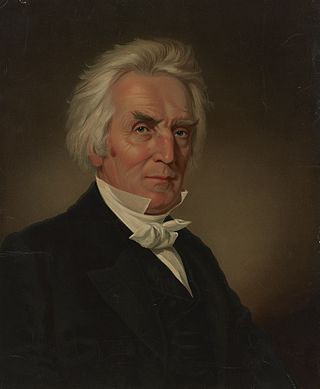
Alexander Campbell was an Ulster Scots immigrant who became an ordained minister in the United States and joined his father Thomas Campbell as a leader of a reform effort that is historically known as the Restoration Movement, and by some as the "Stone-Campbell Movement." It resulted in the development of non-denominational Christian churches, which stressed reliance on scripture and few essentials.
Non-denominational Christianity consists of churches, and individual Christians, which typically distance themselves from the confessionalism or creedalism of other Christian communities by not formally aligning with a specific Christian denomination.
A Christian denomination is a distinct religious body within Christianity that comprises all church congregations of the same kind, identifiable by traits such as a name, particular history, organization, leadership, theological doctrine, worship style and, sometimes, a founder. It is a secular and neutral term, generally used to denote any established Christian church. Unlike a cult or sect, a denomination is usually seen as part of the Christian religious mainstream. Most Christian denominations refer to themselves as churches, whereas some newer ones tend to interchangeably use the terms churches, assemblies, fellowships, etc. Divisions between one group and another are defined by authority and doctrine; issues such as the nature of Jesus, the authority of apostolic succession, biblical hermeneutics, theology, ecclesiology, eschatology, and papal primacy may separate one denomination from another. Groups of denominations—often sharing broadly similar beliefs, practices, and historical ties—are sometimes known as "branches of Christianity". These branches differ in many ways, especially through differences in practices and belief.
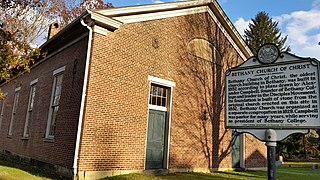
The Churches of Christ, also commonly known as the Church of Christ, is a loose association of autonomous Christian congregations located around the world. Typically, their distinguishing beliefs are that of the necessity of baptism for salvation and the prohibition of musical instruments in worship. Many such congregations identify themselves as being nondenominational. The Churches of Christ arose in the United States from the Restoration Movement of 19th-century Christians who declared independence from denominations and traditional creeds. They sought "the unification of all Christians in a single body patterned after the original church described in the New Testament."
Church of Christ may refer to:
The group of churches known as the Christian Churches and Churches of Christ is a fellowship of congregations within the Restoration Movement that have no formal denominational affiliation with other congregations, but still share many characteristics of belief and worship. Churches in this tradition are strongly congregationalist and have no formal denominational ties, and thus there is no proper name that is agreed upon and applied to the movement as a whole. Most congregations in this tradition include the words "Christian Church" or "Church of Christ" in their congregational name. Due to the lack of formal organization between congregations, there is a lack of official statistical data, but the 2016 Directory of the Ministry documents some 5000 congregations in the US and Canada; some estimate the number to be over 6,000 since this directory is unofficial. By 1988, the movement had 1,071,616 members in the United States.
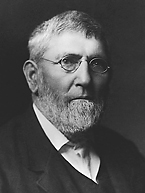
David Lipscomb was a minister, editor, and educator in the American Restoration Movement and one of the leaders of that movement, which, by 1906, had formalized a division into the Church of Christ and the Christian Church. James A. Harding and David Lipscomb founded the Nashville Bible School, now known as Lipscomb University in honor of the latter.
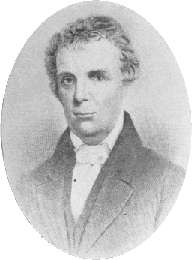
Barton Warren Stone was an American evangelist during the early 19th-century Second Great Awakening in the United States. First ordained a Presbyterian minister, he and four other ministers of the Washington Presbytery resigned after arguments about doctrine and enforcement of policy by the Kentucky Synod. This was in 1803, after Stone had helped lead the mammoth Cane Ridge Revival, a several-day communion season attended by nearly 20,000 persons.
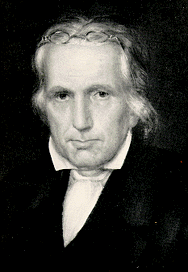
Thomas Campbell was a Presbyterian minister who became prominent during the Second Great Awakening of the United States. Born in County Down, he began a religious reform movement on the American frontier. He was joined in the work by his son, Alexander. Their movement, known as the "Disciples of Christ", merged in 1832 with the similar movement led by Barton W. Stone to form what is now described as the American Restoration Movement.

The Gospel Advocate is a religious magazine published monthly in Nashville, Tennessee for members of the Churches of Christ. The Advocate enjoyed uninterrupted publication since 1866 until the COVID-19 pandemic.

The Evangelical Christian Church(Christian Disciples) as an evangelical Protestant Canadian church body. The Evangelical Christian Church's national office in Canada is in Waterloo, Ontario.
The Brush Run Church was one of the earliest congregations associated with the Restoration Movement that arose during the Second Great Awakening of the early 19th century. In 1811, a congregation of Christian reformers known as the Christian Association of Washington (Pennsylvania) reconstituted itself as a church and constructed a new building to replace the temporary log building where they began. Because it was built on the farm of William Gilchrist, near a stream called Brush Run, both the building and the congregation became known as Brush Run Church. It was the center of activity for Thomas and Alexander Campbell, father and son respectively, in their movement for Christian reform on the American frontier. The meeting house was later used as a blacksmith shop, then as a post office and finally it was moved to Bethany, Virginia.
The Christians (Stone Movement) were a group arising during the Second Great Awakening of the early 19th century. The most prominent leader was Barton W. Stone. The group was committed to restoring primitive Christianity. It merged with the Disciples of Christ (Campbell Movement) in 1832 to form what is now described as the American Restoration Movement (also known as the Stone-Campbell Restoration Movement.)
The Disciples of Christ (Campbell Movement) were a group arising during the Second Great Awakening of the early 19th century. The most prominent leaders were Thomas and Alexander Campbell. The group was committed to restoring primitive Christianity. It merged with the Christians (Stone Movement) in 1832 to form what is now described as the American Restoration Movement (also known as the Stone–Campbell Restoration Movement).
The Living Oracles is a translation of the New Testament compiled and edited by the early Restoration Movement leader Alexander Campbell. Published in 1826, it was based on an 1818 combined edition of translations by George Campbell, James MacKnight and Philip Doddridge, and included edits and extensive notes by Campbell.
The Christian Messenger was a religious magazine established by the early Restoration Movement leader Barton W. Stone in 1826. The paper was a key means of communication for the "Christians" led by Stone and a primary source of unity in the movement, but consistently struggled for survival. It also played a key role in promoting the merger of the "Christians" with the "Disciples" led by Thomas and Alexander Campbell.
The Churches of Christ in Europe are Christian groups of autonomous congregations using the name "church of Christ" which may or may not have a historical association with the Restoration Movement. These groups are characterized by an emphasis on basing doctrine and practice on the Bible alone in order to restore the New Testament church they believe to have been established by Jesus.
References
- ↑ The Merriam-Webster Collegiate Dictionary describes the term as "sometimes offensive". Merriam-Webster, I. (2003). Merriam-Webster's collegiate dictionary. (Eleventh ed.). Springfield, MA: Merriam-Webster, Inc. Entry on "Cambellite."
- 1 2 3 McAlister, Lester G. and Tucker, William E. (1975), Journey in Faith: A History of the Christian Church (Disciples of Christ) - St. Louis, Chalice Press, ISBN 978-0-8272-1703-4
- ↑ see, for example, Weldon E. Warnock, "Why I Am Not A Campbellite," Guardian of Truth XXIX: 23, pp. 705, 727, December 5, 1985
- ↑ See also Wayne Jackson, "Alexander Campbell and Christ's Church," Christian Courier (accessed 11-15-2012)
- 1 2 Monroe E. Hawley, Redigging the Wells: Seeking Undenominational Christianity, Quality Publications, Abilene, Texas, 1976, page 86 ISBN 0-89137-512-0 (paper), ISBN 0-89137-513-9 (cloth)
- ↑ James D. Bales, The Faith Under Fire, Lambert Book House, Shreveport, Louisiana, 1867
- ↑ V. E. Howard, What Is the Church of Christ? 4th Edition (Revised) Central Printers & Publishers, West Monroe, Louisiana, 1971